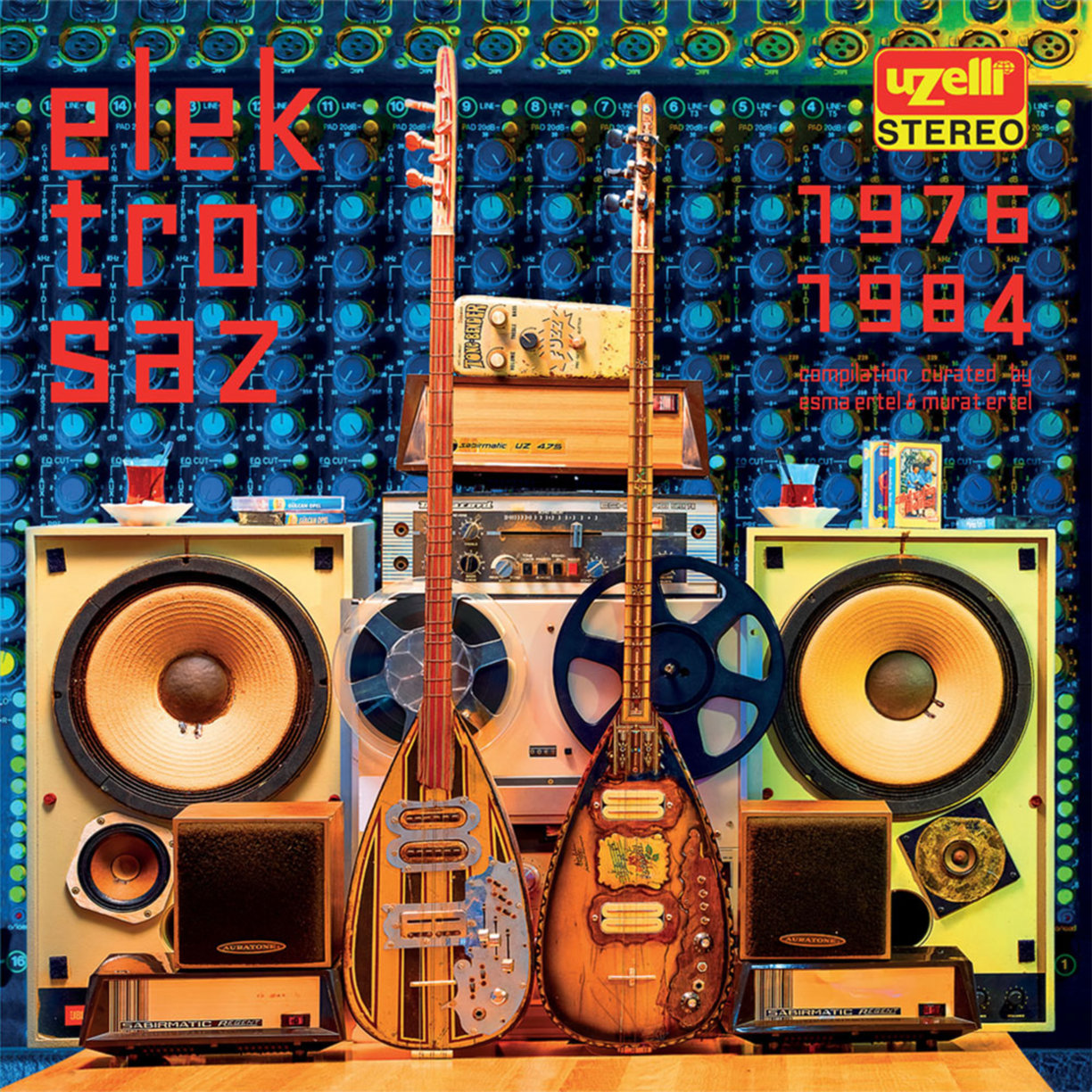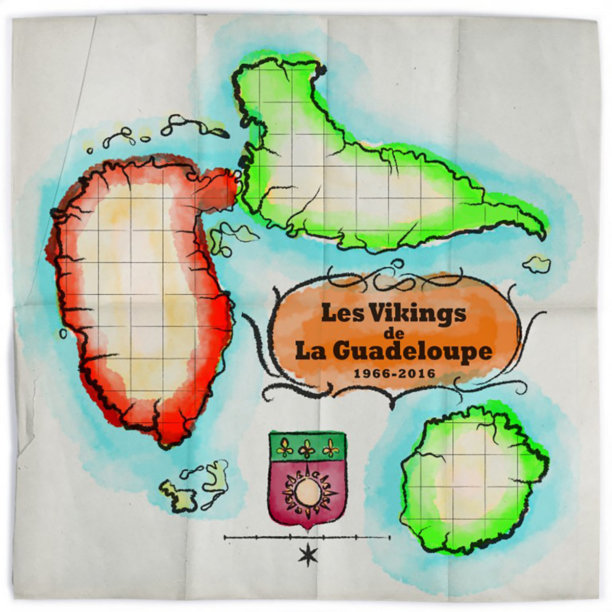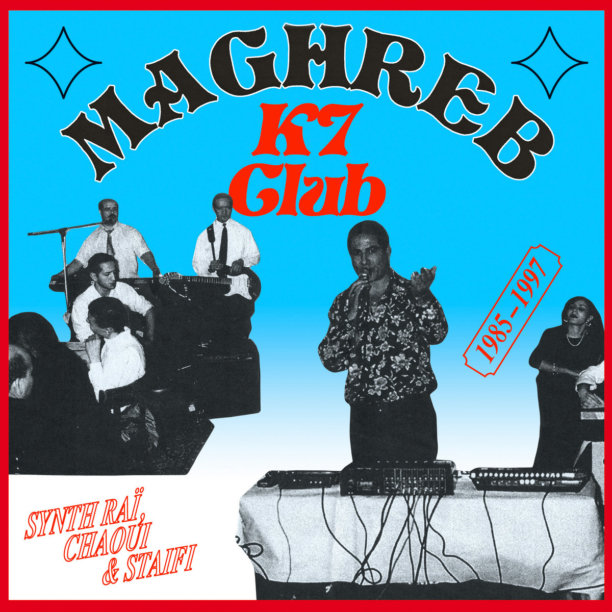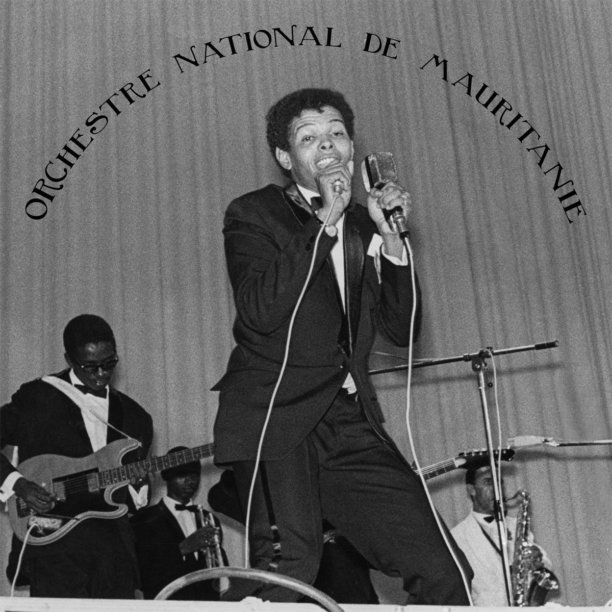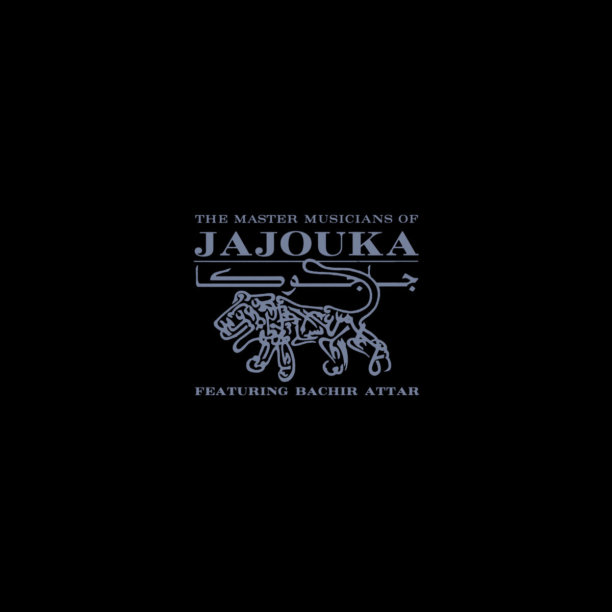Uzelli Elektro Saz
A few months ago, when commercial air travel was still a thing, we visited our second home on the Bosphorus. During our stay, we had the opportunity to meet with Esma and Murat Ertel (lead singer and electric saz player of experimental Istanbul psych-formation Baba Zula) in a coffee house in the neighbourhood of Levent on the occasion of their soon-to-be and meanwhile recently released "Uzelli Elektro Saz" album, compiled from the extensive archives of the Uzelli Kaset label imperium. This was also a chance to put our Turkish proficiency to the test, as we spontaneously decided to do the interview in their mother tongue.
The album officially released on March 13th, 2020, just as worldwide lockdown measures against the currently ongoing COVID-19 pandemic were increasingly intensifying. We were obviously not the only ones caught off-guard by this situation and it has taken us some time to regain our footing. Then again, we thought, it may not be such a bad idea to only actively promote the album at this time, when the world is slowly coming to terms with 'what is' and can again focus on 'what else there is'.
Before we get to the interview itself, however, we feel like we should put this release into context. In January, in an article for German weekly newspaper DIE ZEIT, Hamburg-based journalist and music aficionado Sebastian Reier (aka DJ Booty Carrell) explored the impact of Turkish 'Gastarbeiter' culture (i.e. Turkish guest workers, who migrated to Germany in the 1960s and early '70s and in many cases stayed) on Germany or apparent lack thereof. Which is a more than valid point to make, considering that even today, Turkish pop remains a non-factor in the German charts. At the time though, in a sort of parallel universe, Turkish cultural life in Germany with its own stars and music was thriving, behind labels such as Cologne's Türküola, Munich's Minareci (Grup Doğuş) and Frankfurt's Uzelli Kaset.
The latter was launched by the brothers Muammer and Yavuz Uzelli in 1971 and, with increasing popularity, expanded to Istanbul in 1977. It is now run by Muammer's son, Metin Uzelli. "As the music industry modernised and the '90s CD revolution took place Uzelli began a process of carefully preserving its visual, audio and document archives rather than following the trend to manufacture onto a new format. Much of their catalogue remained hidden and was not released on other formats after its original cassette release. That is until recently when, after an immense amount of work, the catalogue was released digitally," the Electro Saz release notes read. (For more information on Uzelli Kaset, we recommend this recent interview with Metin Uzelli for Berlin Bazzar.)
Uzelli opening its doors to established collectors as well as a new generation of music lovers comes at a time, when vintage Turkish music has become a highly sought-after commodity on the global market that has left vinyl prices soaring, but also paved the way for numerous outstanding re-issues over the past years. In 2017, the label launched a new compilation series from its vaults with a release entitled "Uzelli Psychedelic Anadolu", compiled by Polish DJ and prolific collector Kornelia Binicewicz (Ladies On Records). The "Uzelli Elektro Saz" compilation is next in line and the first of its kind, carefully curated by Esma and Murat Ertel and dedicated to the electric saz:
"Innately attached to Anatolian culture, the saz or bağlama is regarded as the mouthpiece to rebellion and an instrument of the people. Whisperings of revolt, celebration and love have all danced along its neck and fretboard. When plugged in, charged with an electric current, it screams and shouts, dangerous and alluring at the same time. It speaks truth to power while acting as a lightning rod to a host of voices with a shared central heritage," the description reads.
That being said, we finally positioned our digital recorder to face Esma and Murat in person, as they went on to provide some deeper insight into their project and the process behind, all while sipping on a cup of hot 'sahlep'.
– Uzelli Elektro Saz (1976-1984) –
Murat Ertel (ME): One day, I had this idea to do an electric saz compilation because that had never been done before. The saz is an instrument that is very important to me and that I play myself. But I realized how this instrument is still relatively unknown around the world. A lot of people interested in music know about the 'bouzouki', but they know little to nothing about the instrument that influenced the bouzouki, being the saz.
Greedy for Best Music (GfBM): Didn't Cologne-based artist Elektro Hafız release a compilation called "Saz Power" on Ironhand Records back in 2018?
ME: Yes, but that album also included other saz forms like the 'cümbüş'. Our project focusses exclusively on the electric saz, which is an instrument in its own right that we wanted to honour with an album of its own. And my good friend Metin Uzelli was happy to provide us access to his archives on a giant hard disk filled with WAV files.
Esma Ertel (EE): We listened to tracks wherever we went, at home, in the car, in the studio. There were literally thousands of tracks to choose from. We began categorising them by style.
ME: We didn't pay too much attention to pop or better-known 'arabesk', but tried to find tracks that stood out.
EE: Tracks by lesser-known but very talented artists. Sarı Zeki might be a good example of an artist very well-known in musicians' circles, but not to a wider public. He's amazing.
ME: Our picks for this compilation weren't based on an artist's popularity. The Uzelli imprint is meticulous in terms of all the paperwork, but at times we had trouble finding out who was actually playing electric saz on a particular track. Even though Metin Uzelli still has all the original master tapes and agreements, they often only mention the lead vocalist but not the orchestra or musicians involved.
EE: After selecting the tracks we wanted to have on the compilation we went back and checked all of the agreements and rights. That was another part of the process and not an easy one. But I can say that the period from 1976-1984 brought forth a lot of experimental and original sounds as well as some amazing electric saz playing and genius solos. The grooves on some of these tracks are incredible.
ME: Initially, we didn't set out looking for sounds specifically from that period, but the best sounds we dug up from the archives all happened to be from that point in time. Actually, many of them were released before Uzelli eventually acquired the rights to the recordings and they entered into the Uzelli Archives.
EE: Of course there are tracks on this compilation that listeners may have heard being performed by other artists, for example "Gönül Dağı" or "Yaz Dostum", but these interpretations by Mehtap Tuna or Gülcan Opel are a whole new experience. What's even more impressive is that each and every one of these 13 tracks has its own story.
GfBM: What is it about the electric saz that makes it such a special instrument?
ME: The saz itself is a beautiful instrument, probably the most important instrument in Turkish culture. Its origins lead back to Central Asia to the times of the shamans, when it was known as 'kopuz'. In the course of Turkicisation or Islamification, the shamans were killed and their instruments destroyed. Sometime around the 12th century, along with the rise of the Seljuks, this instrument resurfaced under a different name as 'saz'. That lasted up until the 18th century when, under renewed religious pressure, the so-called 'telli saz' (stringed saz) became associated with the devil. So then another name-change happened and it became the 'bağlama'. That's my theory, in any case.
EE: So basically, in order to survive, the instrument had to change names repeatedly.
ME: The electric saz is an amplified version of the saz, just like an electric guitar. This first happened sometime in the early 1960s, but we don’t know who to accredit this change to. Generally the first generation of established saz players such as Arif Sağ or Yavuz Top were ashamed of this development. They found the electrified sound somewhat inferior or even offensive.
EE: All of a sudden the electric saz was being played at weddings, in night clubs as well as abroad. It became the sound of the guest workers (above mentioned 'Gastarbeiter') at their proper weddings, an expression of their longing, of dealing with uncertainty and a way of reconnecting with a shared heritage.
ME: I went to see an open air concert by Neşet Ertaş once and he actually apologised to the audience for playing an electric saz on stage.
EE: We need to understand that the acoustic saz is a highly respected instrument. So in a sense, interfering with its sound or 'its soul', by amplifying it, can be frowned upon.
ME: It's also about a certain culture the electric saz has come to stand for that more traditionally-minded listeners might have trouble coming to terms with. But all that aside, we owe a lot to this instrument and this compilation is a way for us to show our appreciation and introduce these sounds to a wider audience.
Esma and Murat Ertel's electric saz compilation from the Uzelli archives is out now and available digitally. The double gatefold vinyl LP includes detailed liner notes and descriptions of each track. We would like to thank them for their time and now invite you to stream the full compilation below. Our personal favourites are Akbaba İkilisi's "Darıldım Darıldım" (which ironically includes Arif Sağ on electric saz) as well as the two instrumental tracks "Topal" and "Dom Dom Kurşunu" by the aforementioned Sarı Zeki. Fun fact: Not only did Esma and Murat curate the tracks for this compilation. They were also in charge of the entire artwork down to the tracklist, which is Murat's handwriting. What's more, the two sazes pictured on the cover alongside original items from the Uzelli recording studios are actually Murat's own instruments. They were made by a master saz maker from Istanbul’s Kasımpaşa neighbourhood and, coincidentally, are from the same era as the album's tracks.
